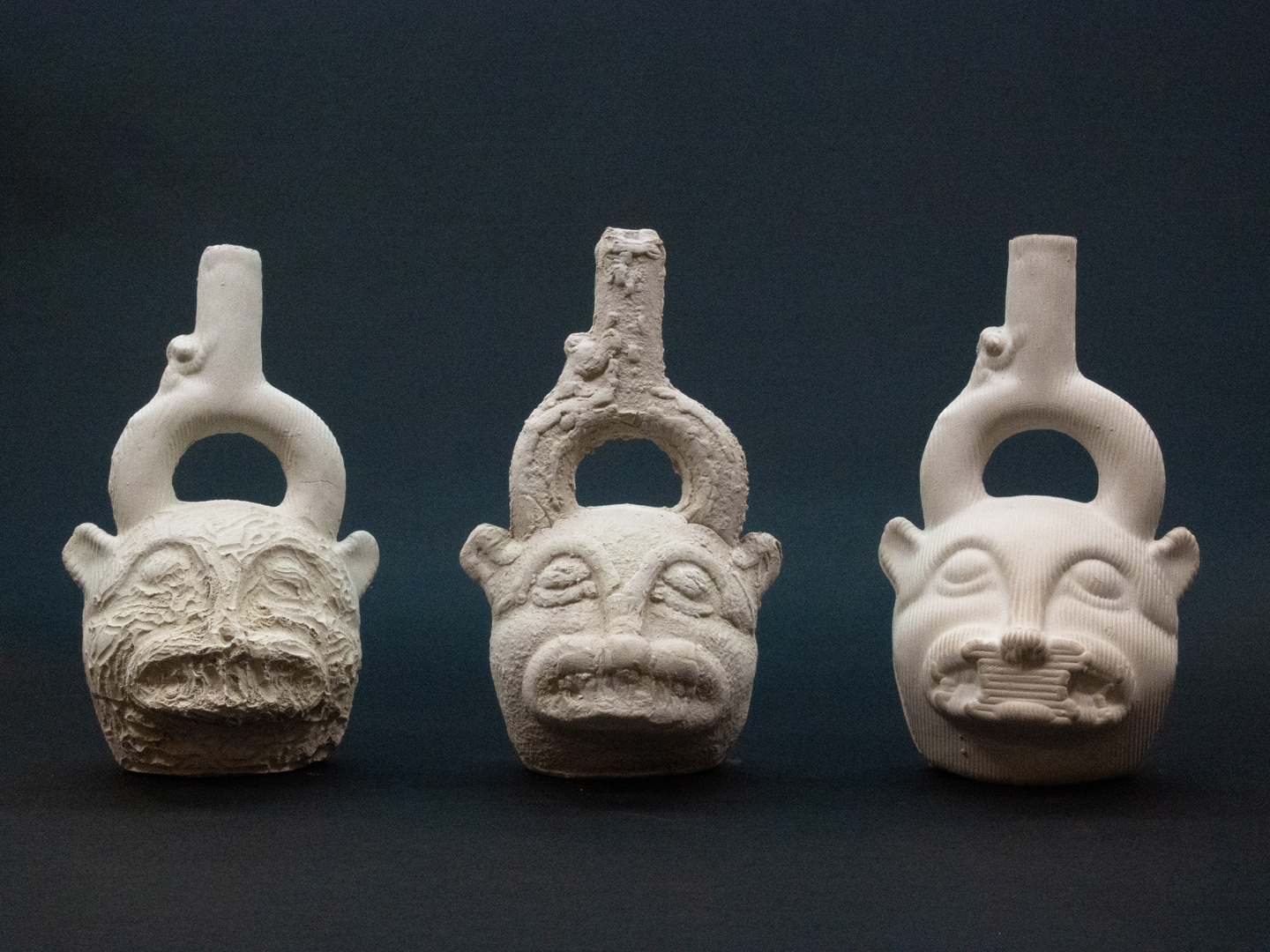“The Ghost in The Machine: Digital Stylization and Expressive Re-Materialization of Ancient Ceramics” by Elran and Zoran
Conference:
Type(s):
Title:
- The Ghost in The Machine: Digital Stylization and Expressive Re-Materialization of Ancient Ceramics
Presenter(s)/Author(s):
Entry Number: 12
Abstract:
This paper proposes a new perspective on the role of computers in the re-materialization of ancient artifacts, highlighting issues of conservation, self-expression, and authorship in creative processes. Specifically, our approach allows all of the creative spirits (i.e., creative agencies) taking part in the making process—from the ancient makers, to the digital craftsperson, to the making machine itself—to be represented in the final outcome. The paper explores the evolution of our technique through three projects that rely on both digital and traditional making practices. We introduce the notion of a digital spirit, which allows for a holistic and respectful integration of diverse making agencies in a unified hybrid practice.
References:
Benyamini Contemporary Ceramics Center. 2020. Not Made in China. Accessed March 21, 2021. https://www.benyaminiceramics.org/en/ceramic-galleries/past-exhibitions/2020-2/xyzt-material-investigations-group-exhibition-n/not-made-in-china-stratasys/.Google Scholar
Bryan Czibesz. 2020. “Bryan Czibesz.” Bryan Czibesz. Accessed June 11, 2020. https://www.bryanczibesz.com.Google Scholar
Hilda Carr. 2020. CARVE: Techniques to Bring the Ceramics Surface to Life. S.l.: QUARRY BOOKS.Google Scholar
Case Western Reserve University Department of Art History and Art, 2021. Collaboration between Factum Foundation and CWRU combines machine learning and image analysis. Accessed March 21, 2021. https://arthistory.case.edu/2021/01/collaboration-between-factum-foundation-and-cwru-combines-machine-learning-and-image-analysis/.Google Scholar
Cosmo Wenman. n.d. cosmowenman.com. Accessed November 24, 2021. https://cosmowenman.com/.Google Scholar
Nir Dick, Amit Zoran. 2019. “Dynamic Aspects of Making and Personal Style. A Case Study in a Clay Relief Technique.” Master Thesis, Jerusalem IL: Hebrew University of Jerusalem.Google Scholar
Factum Foundation. 2022. factumfoundation.org. Accessed May 23, 2022. https://www.factumfoundation.org/.Google Scholar
Helen Gardner, Fred S. Kleiner, and Christin J. Mamiya. 2005. Gardner’s Art through the Ages. 12th ed. Belmont, CA: Thomson/Wadsworth.Google Scholar
Robin Hopper. 2016. Making Marks: Discovering the Ceramic Surface.Google Scholar
Lucy Johnston. 2015. Digital Handmade: Craftsmanship in the New Industrial Revolution: 541 Illustrations in Color and Black and White. New York, New York: Thames & Hudson.Google Scholar
Ian Jones. 2016. “Wabicha And The Perfection Of Beauty In Wood-Fired Ceramics.” PhD, The Australian National University. https://core.ac.uk/download/pdf/156711103.pdf.Google Scholar
Steven Kemper, and Rebecca Cypess. 2019. “Can Musical Machines Be Expressive? Views from the Enlightenment and Today.” Leonardo 52 (5): 448–54. https://doi.org/10.1162/leon_a_01477.Google ScholarCross Ref
Naama Glauber, Raanan Fattal, Amit Zoran. 2020. “Tracking Dynamic Identifiers of Personal Style in Digital Drawing.” Master Thesis (not yet published), Jerusalem IL: Hebrew University of Jerusalem.Google Scholar
David Pye. 1968. The Nature and Art of Workmanship. London: Cambridge U.P.Google Scholar
The Institute of Archaeology. 2022. Computational Archeology Laboratory. Accessed May 23, 2022. https://archaeology.huji.ac.il/computational-archaeology-laboratory.Google Scholar
The Metropolitan Museum of Art. 2002. Department of Greek and Roman Art. “Roman Copies of Greek Statues.” In Heilbrunn Timeline of Art History. http://www.metmuseum.org/toah/hd/rogr/hd_rogr.htm (October 2002)Google Scholar
Unfold Design Studio. 2021. Unfold Design Studio. Accessed March 21, 2021. http://unfold.be/.Google Scholar
Peter Wegner. 1997. “Why Interaction Is More Powerful than Algorithms.” Commun. ACM 40 (5): 80–91. https://doi.org/10.1145/253769.253801.Google ScholarDigital Library
Amit Zoran, Nir Dick, and Naama Glauber. 2021. “The Choreography of the Creative Process: Drawing in Time and Space.” Leonardo 2021; 54 (6): 643–648. doi: https://doi.org/10.1162/leon_a_02014Google Scholar





